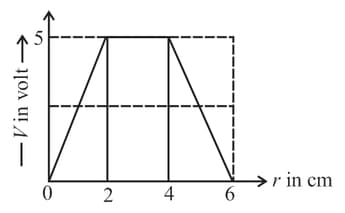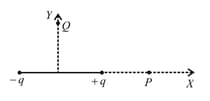MEDIUM
JEE Main/Advance
IMPORTANT
Earn 100
The variation of potential with distance from a fixed point is shown in the figure.

The electric force acting on a point charge of placed at the origin will be

(a)
(b)
(c)
(d)
100% studentsanswered this correctly

Important Questions on Electrostatics
EASY
JEE Main/Advance
IMPORTANT
The electric potential as a function of distance (in ) is given by . The value of the electric field at would be
EASY
JEE Main/Advance
IMPORTANT
HARD
JEE Main/Advance
IMPORTANT
EASY
JEE Main/Advance
IMPORTANT
MEDIUM
JEE Main/Advance
IMPORTANT
A non-conducting ring of radius carries a total charge of distributed non-uniformly on its circumference producing an electric field everywhere in space. The value of the line integral being centre of the ring) in volts is (Approximately)
EASY
JEE Main/Advance
IMPORTANT
Due to an electric dipole shown in figure, the electric field intensity is parallel to dipole axis

EASY
JEE Main/Advance
IMPORTANT
EASY
JEE Main/Advance
IMPORTANT
